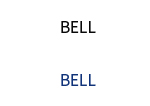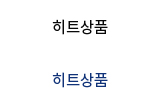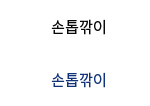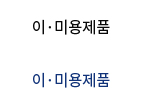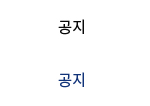The Driving License Category C Case Study You'll Never Forget
페이지 정보
작성자 Sheila 댓글 0건 조회 70회 작성일 25-04-05 21:08본문
Class C Commercial Driver's License
The class C commercial driver's license (CDL) offers a diverse range of vehicle types and trucking jobs. It is among the most flexible CDLs. It can be used for anything from buses and recreational vehicles to passenger vehicles and hazmat transportation vehicles.
With a class C license, you can operate straight boxes, trucks, dump trucks and buses that can carry 16 passengers or more including the driver.
Passenger Vehicles
New York drivers can choose from a wide range of classes. These classes cater to a variety of driving needs and vehicle types. Whether you're looking to cruise down Broadway in your dad's 1986 Toyota Corolla or pilot a semi through the Adirondacks understanding what each class means is vital.
If you are looking to drive passenger vehicles such as station wagons and sedans, the non-CDL class C license is ideal. This license permits you to drive a single vehicle with a maximum GVWR of 26,001 pounds. You can also tow vehicles up to the maximum trailer weight of 10,000 pounds. Drivers can add endorsements to their class C license for increased employment opportunities. These additional endorsements can include passengers (P) tank (T) or hazardous materials (H). These endorsements are typically obtained by passing additional knowledge tests and specialized test of skills.
 The maximum number of passengers that can be transported in a passenger vehicle that has a class C non CDL license is 16 including the driver. Drivers are also required to limit the number of passengers who are under 18 that they transport, unless it is an immediate family member or someone who is over 18. Teen drivers who hold a driver's license class C and are under 18 must always have a parent present in the vehicle.
The maximum number of passengers that can be transported in a passenger vehicle that has a class C non CDL license is 16 including the driver. Drivers are also required to limit the number of passengers who are under 18 that they transport, unless it is an immediate family member or someone who is over 18. Teen drivers who hold a driver's license class C and are under 18 must always have a parent present in the vehicle.
 For a class C non-CDL license you must be at least 18 years old and pass a medical examination to be eligible to drive. You must also meet federal requirements if are planning to drive on the interstate or transport dangerous materials.
For a class C non-CDL license you must be at least 18 years old and pass a medical examination to be eligible to drive. You must also meet federal requirements if are planning to drive on the interstate or transport dangerous materials.
A class M license is offered to those who want to drive mopeds or motorcycles. This is only available to drivers in junior years, and is only valid in New York. Class M drivers can only use motorized two-wheeled vehicles. New York teens must complete an education course and record hours of practice before they are able to obtain their class M driver's license. The license for teens will be subject to restrictions, for example, the driver being restricted from transporting any passengers under age 21 and not driving between 11 p.m. until 6 a.m.
Combination Vehicles
If you need to drive a combination vehicle to perform your job then Class C is right for you. This license allows you to drive vehicles with a gross mass of vehicle (GVWR) greater than 26,001 pounds, and trailers that weigh less than 10,000 pounds. This includes small delivery trucks, hazmat vehicles and passenger vans. It also lets you drive a school bus, provided you have the necessary endorsements and passes the medical and background checks required for this type of vehicle.
Many states have added regulations and rules for drivers with this kind of license. One requirement is to keep a logbook that lists the number of hours you've driven and the type(s) you're carrying. Failure to maintain this log book may result in fines or even the suspension of your CDL. You may need to obtain an over-sized load permit if your cargo exceeds certain limits.
To be eligible for a Class C License, you must be 18 years of age. To upgrade to a higher-level CDL you must pass the knowledge and skill tests for that category and complete any training required or on-the-job experience. You must also be at least 21 years old to drive vehicles across state lines and transport hazardous materials.
To qualify for a class C license, you must pass a medical test and pass an background check that includes a criminal background check. You must also pass the drug test. Some states require you to pass driver's training or attend trucking safety programs before issuing the CDL.
There are also other restrictions that you must satisfy in order to operate in a vehicle that has a class-C license. Some of these restrictions are age-based and others are dependent on the type of vehicle or passengers you're bringing. For instance, some states won't allow you to transport non-family members under age 21 while others limit the number of non-family passengers to a maximum of one.
You can add endorsements to your California class C license, like the P-passenger, T-double or triple-trailer endorsements. In order to add these endorsements, you must passing a second knowledge test and occasionally an additional test of skills.
Towing Vehicles
A category Kup prawo jazdy kategorii B bez egzaminu prawo jazdy a1 c+e (look what i found) license is the most complete HGV license you can get that allows drivers to drive an array of large vehicles. This includes single and double trailer vehicles with an authorized maximum mass (MAM) up to 8,250kg. It also permits drivers to drive articulated vehicles, such as lorries and coaches, and also the more basic drawbar vehicle referred to as an tipper or artic truck.
In addition to passenger cars and trucks drivers with an ACC license can operate small commercial vehicles such as vans, dump trucks, and straight or box trucks. If they possess the required endorsements, they may also operate buses that hold more than 16 passengers for hire as and vehicles that transport hazardous materials.
Tow truck operators are a different type of driver who requires a category prawo jazdy kat c license. They typically operate tow trucks that have an GVWR that is less than 26,001 pounds and are able to tow other vehicles as long as the vehicle being towed has a GVWR less than or equal to that of the tow truck.
If the tow truck is GVWR more than 26,001 pounds, or the driver intends to transport passengers or dangerous material, then they will need an upgrade to a higher level CDL. There are two levels of licenses for operators of tow trucks that are level 1 and level 2. Level 2 certification requires at least one year of experience as the driver of a tow vehicle. This certification is required to operate vehicles that are greater than 10,000 pounds GVWR, even if they aren't towing or carrying passengers for compensation.
Drivers who hold a category C licence can also apply for an additional licence known as a T endorsement, which allows them to drive triple or double-trailer vehicles. It requires a separate written and practical test, in addition to a driving assessment. This is an optional extra to the category C license, prawo jazdy C+E and some employers only require their drivers to hold a T licence for certain tasks. Some drivers choose to get it to improve their chances in the industry and also to prove that they are able to operate a more complex vehicle.
Hazardous Materials
You will need a Class C commercial license to operate a vehicle that can carry 16 or more people, including the driver. This includes vehicles that transport hazardous substances, or HazMat. This includes trucks with a tanks that are rated, as passengers vans as well as smaller HAZMAT vehicles. The class C CDL holders must possess an endorsement for tanks. They may also have to pass a hazard material knowledge test.
A hazard material is any chemical, gas, explosive or other substance that is classified as a hazardous material under 49 CFR Part 172. It is defined as any material that creates a substantial threat of death, serious injury or property damage, or a significant risk to the safety, health or well-being of people or the environment. It is transported by an alternative vehicle to a rail car, airplane or vessel. A person who is a carrier of a dangerous material in commerce is any department, agency or instrumentality of the United States, a State, a political subdivision of a State or an Indian tribe that transports hazardous substances.
The DOT has created specific rules for the transportation of hazardous substances. These rules include specifications for shipping labels, papers, placards and other issues. Drivers who do not comply with these rules can be held accountable for a DOT violation, which could result in fines and penalties.
To be eligible for a Class C Commercial Driver's License you must satisfy these requirements:
You must be at least 21 years old age and have an excellent driving record to obtain a Class C commercial driver's license. You must also be physically able to operate the vehicle you plan on driving. This means taking a medical exam and undergoing an alcohol test. In certain instances you may require fingerprinting or a background check. You must also satisfy the basic requirements of DOT which include a classroom course and on-road instruction. Some companies may require specialized training in hazardous materials for their drivers, which is usually an additional expense in addition to the cost of a commercial driver's license of class C.
The class C commercial driver's license (CDL) offers a diverse range of vehicle types and trucking jobs. It is among the most flexible CDLs. It can be used for anything from buses and recreational vehicles to passenger vehicles and hazmat transportation vehicles.
With a class C license, you can operate straight boxes, trucks, dump trucks and buses that can carry 16 passengers or more including the driver.
Passenger Vehicles
New York drivers can choose from a wide range of classes. These classes cater to a variety of driving needs and vehicle types. Whether you're looking to cruise down Broadway in your dad's 1986 Toyota Corolla or pilot a semi through the Adirondacks understanding what each class means is vital.
If you are looking to drive passenger vehicles such as station wagons and sedans, the non-CDL class C license is ideal. This license permits you to drive a single vehicle with a maximum GVWR of 26,001 pounds. You can also tow vehicles up to the maximum trailer weight of 10,000 pounds. Drivers can add endorsements to their class C license for increased employment opportunities. These additional endorsements can include passengers (P) tank (T) or hazardous materials (H). These endorsements are typically obtained by passing additional knowledge tests and specialized test of skills.
 The maximum number of passengers that can be transported in a passenger vehicle that has a class C non CDL license is 16 including the driver. Drivers are also required to limit the number of passengers who are under 18 that they transport, unless it is an immediate family member or someone who is over 18. Teen drivers who hold a driver's license class C and are under 18 must always have a parent present in the vehicle.
The maximum number of passengers that can be transported in a passenger vehicle that has a class C non CDL license is 16 including the driver. Drivers are also required to limit the number of passengers who are under 18 that they transport, unless it is an immediate family member or someone who is over 18. Teen drivers who hold a driver's license class C and are under 18 must always have a parent present in the vehicle. For a class C non-CDL license you must be at least 18 years old and pass a medical examination to be eligible to drive. You must also meet federal requirements if are planning to drive on the interstate or transport dangerous materials.
For a class C non-CDL license you must be at least 18 years old and pass a medical examination to be eligible to drive. You must also meet federal requirements if are planning to drive on the interstate or transport dangerous materials.A class M license is offered to those who want to drive mopeds or motorcycles. This is only available to drivers in junior years, and is only valid in New York. Class M drivers can only use motorized two-wheeled vehicles. New York teens must complete an education course and record hours of practice before they are able to obtain their class M driver's license. The license for teens will be subject to restrictions, for example, the driver being restricted from transporting any passengers under age 21 and not driving between 11 p.m. until 6 a.m.
Combination Vehicles
If you need to drive a combination vehicle to perform your job then Class C is right for you. This license allows you to drive vehicles with a gross mass of vehicle (GVWR) greater than 26,001 pounds, and trailers that weigh less than 10,000 pounds. This includes small delivery trucks, hazmat vehicles and passenger vans. It also lets you drive a school bus, provided you have the necessary endorsements and passes the medical and background checks required for this type of vehicle.
Many states have added regulations and rules for drivers with this kind of license. One requirement is to keep a logbook that lists the number of hours you've driven and the type(s) you're carrying. Failure to maintain this log book may result in fines or even the suspension of your CDL. You may need to obtain an over-sized load permit if your cargo exceeds certain limits.
To be eligible for a Class C License, you must be 18 years of age. To upgrade to a higher-level CDL you must pass the knowledge and skill tests for that category and complete any training required or on-the-job experience. You must also be at least 21 years old to drive vehicles across state lines and transport hazardous materials.
To qualify for a class C license, you must pass a medical test and pass an background check that includes a criminal background check. You must also pass the drug test. Some states require you to pass driver's training or attend trucking safety programs before issuing the CDL.
There are also other restrictions that you must satisfy in order to operate in a vehicle that has a class-C license. Some of these restrictions are age-based and others are dependent on the type of vehicle or passengers you're bringing. For instance, some states won't allow you to transport non-family members under age 21 while others limit the number of non-family passengers to a maximum of one.
You can add endorsements to your California class C license, like the P-passenger, T-double or triple-trailer endorsements. In order to add these endorsements, you must passing a second knowledge test and occasionally an additional test of skills.
Towing Vehicles
A category Kup prawo jazdy kategorii B bez egzaminu prawo jazdy a1 c+e (look what i found) license is the most complete HGV license you can get that allows drivers to drive an array of large vehicles. This includes single and double trailer vehicles with an authorized maximum mass (MAM) up to 8,250kg. It also permits drivers to drive articulated vehicles, such as lorries and coaches, and also the more basic drawbar vehicle referred to as an tipper or artic truck.
In addition to passenger cars and trucks drivers with an ACC license can operate small commercial vehicles such as vans, dump trucks, and straight or box trucks. If they possess the required endorsements, they may also operate buses that hold more than 16 passengers for hire as and vehicles that transport hazardous materials.
Tow truck operators are a different type of driver who requires a category prawo jazdy kat c license. They typically operate tow trucks that have an GVWR that is less than 26,001 pounds and are able to tow other vehicles as long as the vehicle being towed has a GVWR less than or equal to that of the tow truck.
If the tow truck is GVWR more than 26,001 pounds, or the driver intends to transport passengers or dangerous material, then they will need an upgrade to a higher level CDL. There are two levels of licenses for operators of tow trucks that are level 1 and level 2. Level 2 certification requires at least one year of experience as the driver of a tow vehicle. This certification is required to operate vehicles that are greater than 10,000 pounds GVWR, even if they aren't towing or carrying passengers for compensation.
Drivers who hold a category C licence can also apply for an additional licence known as a T endorsement, which allows them to drive triple or double-trailer vehicles. It requires a separate written and practical test, in addition to a driving assessment. This is an optional extra to the category C license, prawo jazdy C+E and some employers only require their drivers to hold a T licence for certain tasks. Some drivers choose to get it to improve their chances in the industry and also to prove that they are able to operate a more complex vehicle.
Hazardous Materials
You will need a Class C commercial license to operate a vehicle that can carry 16 or more people, including the driver. This includes vehicles that transport hazardous substances, or HazMat. This includes trucks with a tanks that are rated, as passengers vans as well as smaller HAZMAT vehicles. The class C CDL holders must possess an endorsement for tanks. They may also have to pass a hazard material knowledge test.
A hazard material is any chemical, gas, explosive or other substance that is classified as a hazardous material under 49 CFR Part 172. It is defined as any material that creates a substantial threat of death, serious injury or property damage, or a significant risk to the safety, health or well-being of people or the environment. It is transported by an alternative vehicle to a rail car, airplane or vessel. A person who is a carrier of a dangerous material in commerce is any department, agency or instrumentality of the United States, a State, a political subdivision of a State or an Indian tribe that transports hazardous substances.
The DOT has created specific rules for the transportation of hazardous substances. These rules include specifications for shipping labels, papers, placards and other issues. Drivers who do not comply with these rules can be held accountable for a DOT violation, which could result in fines and penalties.
To be eligible for a Class C Commercial Driver's License you must satisfy these requirements:
You must be at least 21 years old age and have an excellent driving record to obtain a Class C commercial driver's license. You must also be physically able to operate the vehicle you plan on driving. This means taking a medical exam and undergoing an alcohol test. In certain instances you may require fingerprinting or a background check. You must also satisfy the basic requirements of DOT which include a classroom course and on-road instruction. Some companies may require specialized training in hazardous materials for their drivers, which is usually an additional expense in addition to the cost of a commercial driver's license of class C.
댓글목록
등록된 댓글이 없습니다.

